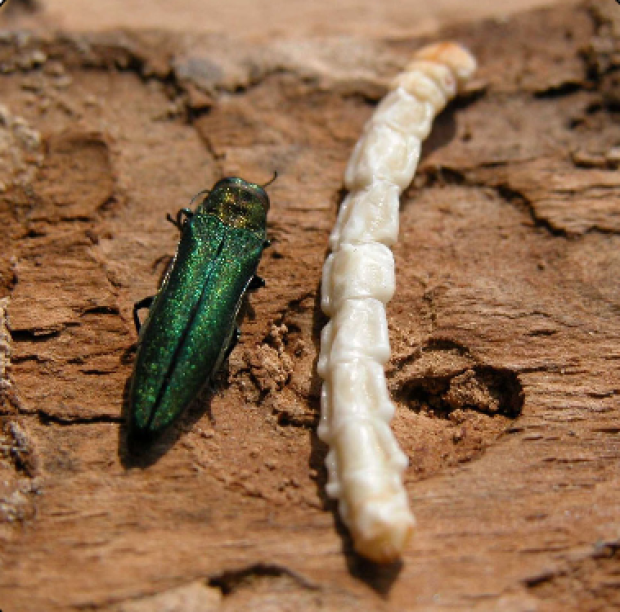In the fight against an invasive beetle, keep an eye out for woodpeckers
Researchers are in Halifax this week to discuss how they can slow down the infestation of an invasive beetle that has recently damaged trees in Bedford.
The emerald ash borer has killed three ash trees since it was first spotted in DeWolfe Park, but the damage the beetle can cause has research scientist Jon Sweeney asking the public for help.
"We would like the citizens of Halifax to keep and eye out for signs of woodpecker activity," said Sweeney, with Natural Resources Canada.
Woodpeckers are a natural "mortality agent" — they eat the larva of the beetle — and can be an indicator of an infestation.
"If you see bark flakes on the ground, that's a sign of woodpeckers in that tree, and if it's an ash tree, there's likely emerald ash borer there."
They also help curb the problem by eating up to 85 per cent of the larva on a single tree.

The obvious sign of an infestation is cracked bark. But Sweeney and his team of researchers will conduct experiments within the year that will let them know if a tree is infected well before obvious signs of an infestation.
"We cut a couple branches off the tree, peel back thin layers of the bark, and then we can see thin little larva," he said.
Work like this helps researchers find an infestation before it's too late to be treated. If the tree isn't heavily damaged, there's the option of using insecticides.
"It can protect the tree for up to two years, and it will kill the little larva inside. It needs to be a healthy tree, for it will take the product up into its leaves."
Sweeney hopes to avoid a serious infestation in Halifax. Communities in Ontario have had entire ash tree populations wiped out in some communities from the destructive beetle.
"The main way they get around is by people moving infested ash material, unfortunately," said Sweeney.
Ash is used as firewood, and that's what could be bringing the beetle to Bedford.

Sweeney said the bug can fly anywhere from 300 metres to 10 kilometres, and is on the lookout for the nearest ash tree where it can begin to populate.
"The populations start to build in a fast projection. If you don't do anything, they will build up. After 10 years, about 99 per cent of the ash trees are dead in that area."
Sweeney said it's too early to tell what to expect for possible infestations in Halifax. For now, researchers are looking into the situation to understand what preventative actions to take. The work could start as early as January.

